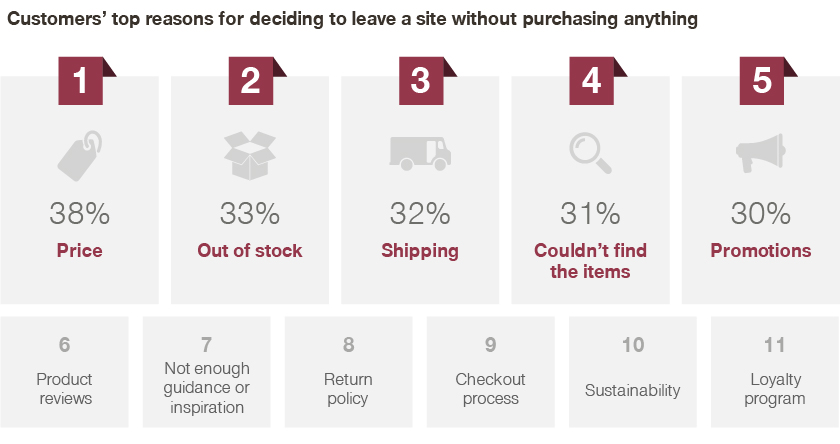Apparel and footwear companies still have a long way to go to improve conversions. With more customers shopping online than ever before, websites can make or break brands. Experts Shikha Jain and Ashley Zacca outline what pain points drive customers away, and what strategies businesses can adopt to drive sales and maintain loyalty.
At a time when consumer spend has shifted dramatically towards eCommerce as a result of the pandemic, it seems like a no-brainer for apparel and footwear brands to continue doubling down on their website – the primary channel for their direct-to-consumer (DTC) strategy. Not only does DTC boost financial metrics like revenue and profit, but it also allows brands to fully own the consumer experience; building brand trust, and loyalty. Nike, one of the gold standards for consumer experience, announced a rapid acceleration of its DTC growth with other brands like Adidas and Under Armour close behind.
However, recent research reveals that most brands still have a long way to go for their own websites. Simon-Kucher & Partners in conjunction with FullCircle surveyed 2,000 consumers in March 2021 to understand why they typically leave an apparel or footwear brand’s website without purchasing. The insight: critical elements such as price, stock-outs, shipping policies, finding the right items, and promotions are still major pain points for consumers, and are leading to suboptimal conversions.

Why is it so important for apparel and footwear brands to get these elements right? How should brands address these pain points?
Setting the “Right” Price
Price, the most frequently occurring pain point, continues to turn consumers away. It is especially important to get pricing right in DTC channels, as these are where the brand has control over prices displayed to consumers. A pricing strategy that is based on cost-plus or competition loses sight of the key input – the consumer. A value-based pricing strategy, on the other hand, is consumer-centric – it quantifies willingness-to-pay, and identifies the right price that is indicative of brand and product value.
Avoiding Inventory Stock-Outs
Research regularly conducted by Simon-Kucher shows that half of the consumers who shop through DTC channels do so to get the colors, styles, and sizes that they want. This is especially true for consumer segments that purchase more inclusive sizing. Sophisticated inventory planning and demand forecasting will enable brands to showcase the full selection of assortment offered on their websites, as well as capture potential lost volume in a multi-channel environment – both of which will improve consumer experience and financial metrics.
Optimizing Shipping Policies
Shipping policies often tend to be an afterthought as a tool to build the brand. However, as a critical piece of the online experience, and one of the final decision points in the consumer journey, brands should use shipping policies to tip the scales in their favor. There are many options that make shipping more appealing to consumers, such as:
- Free vs. paid
- The use of tiers tied to shipping speed
- Promotional shipping
The right shipping structure will of course differ for each brand, but should ultimately be designed around the consumer experience.
Helping Consumers Find the Right Item
Consumer frustration on a website due to unclear product communication can cause decision paralysis or purchase deferral. While many apparel and footwear brands use images and videos, they often fall short in their sizing guides, which can lead to confusion about product fit. Brands can also go one step further to provide a guided selling experience by incorporating sales dialogue such as “you may also like” or “buy the look”, or offer personalized quizzes to tailor product recommendations. This will help to increase engagement and potential upsell.
Utilizing Effective Promotions
Promotions can be a double-edged sword. While they are a great tool to drive site traffic, acquire new customers, and boost conversion, they can become a burden if consumers rely on them to trigger a purchase. To make sure that promotions are a win-win for both brands and consumers, companies need to develop a promotional toolkit that designs campaigns and events around the objective, target consumer segments and appropriate products. Additionally, post-event effectiveness should be measured to inform future promotional planning.
Key Takeaways
Apparel and footwear brands should immediately assess whether they have accurately addressed the typical pain points when it comes to their own websites and conversion metrics. Getting brand websites right will drive significant financial impact, while also building a competitive moat, and loyalty with consumers.
